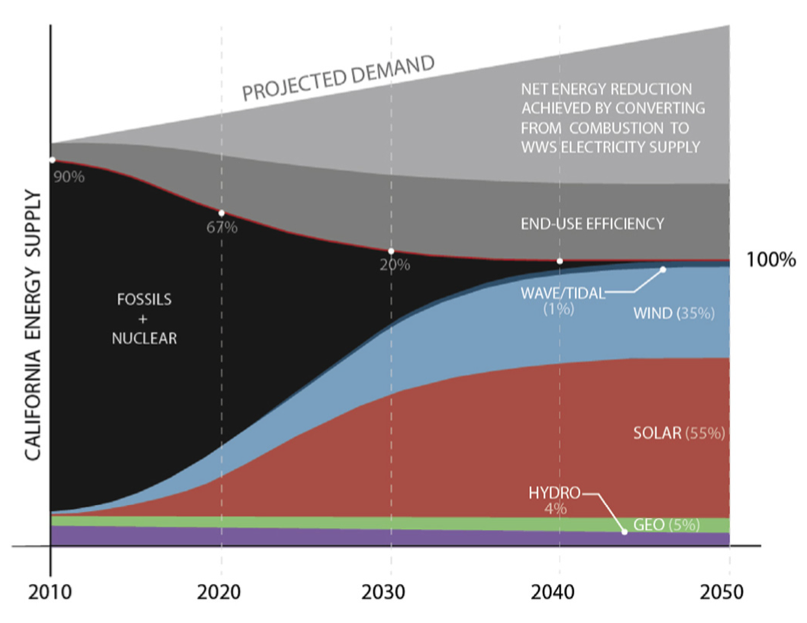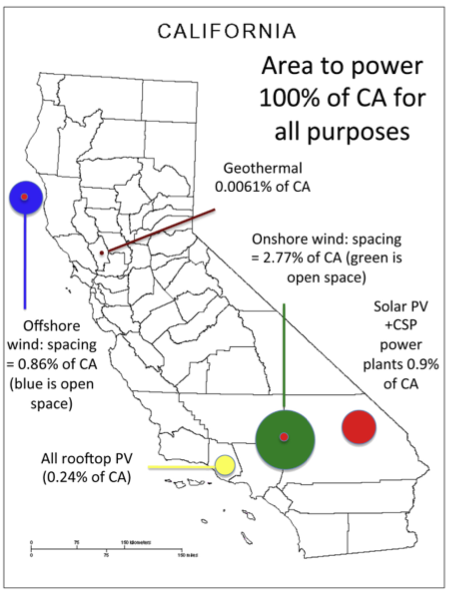An avalanche of studies is concluding that the world could entirely power itself with renewable energy in the coming decades, doing away with fossil fuels and the pollution they produce—while slowing global warming. Mark Jacobson’s name has been at the top of many of academia’s contributions to this research.
“We think it’s technically and economically feasible to convert the world’s entire energy into wind, solar and water,” Jacobson says. “The main problems are social and political.”
“We think it’s technically and economically feasible to convert the world’s entire energy into wind, solar and water. The main problems are social and political.”
Five years ago, the Stanford engineering professor explained in Scientific American that the world could install four million wind turbines, a couple billion rooftop photovoltaic arrays, plus battery packs and other energy installations to eliminate fossil fuels. The plan was refined, then described in a 2011 Energy paper, along with an Energy Policy paper focused on the energy supply in the United States. Then, last summer, he co-authored an Energy Policy paper that focused on New York.
“We figured it would be more pragmatic at the state level,” he says.
That paper described a plan for phasing out the use of fossil fuels in the Empire State by 2030 through wind, solar, and water power, such as hydroelectricity, wave energy, and tidal power. The plan would reduce fuel costs to zero yet boost economic development, producing more green jobs than would be lost from the fossil-fuel industry.
For Jacobson’s latest intellectual chef-d’œuvre, he co-authored a recent paper in Energy describing how California could capitalize on its abundant sunshine, on- and off-shore winds, tides, waves, and geothermal heat to abolish fossil fuels. Electric cars and hydrogen fuel cell vehicles would be recharged using the renewable electricity supplies.
Under the plan, all new energy generation in the Golden State from 2020 onward would be from renewable sources. By 2030, 80 to 85 percent of the state’s current energy supply would be replaced with clean sources. And starting in 2050, the state wouldn’t need to burn another drip of oil, hunk of coal, or molecule of natural gas—and the Diablo Canyon nuclear power plant wouldn’t be needed.

(Chart: Energy)
The following chart shows how much space the projects would occupy. The little red dots show space taken up by wind turbines; the blue and green around them show total wind farm acreage, which could also be used for farming and fishing and the like. Rooftop solar would go on existing buildings, but other photovoltaic and concentrated solar power would require new land, as would the geothermal facilities.

Jacobson’s team calculated that their California plan would create hundreds of thousands more jobs than it would sacrifice, and it would annually save more than 10,000 lives and $100 billion in health care costs (expenses which are now generated by pollution). The 603 gigawatts of new renewable energy facilities would cost $1.1 trillion, but those costs would be more than offset through climate benefits and fuel savings.
The next step? Jacobson is planning to publish a paper outlining how all other states could do something similar.





